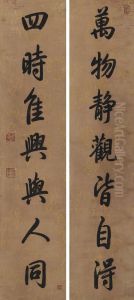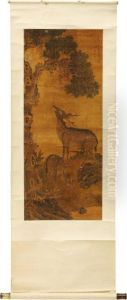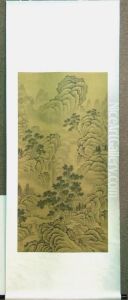Qianlong Paintings
Qianlong, born Hongli on September 25, 1711, was the sixth emperor of the Qing dynasty, ruling China from 1735 to 1796. Although not an artist in the conventional Western sense, his reign is renowned for overseeing one of the most vibrant and prolific periods in Chinese art history, making him an influential figure in the art world. Qianlong was not only a patron of the arts but also an active participant in artistic endeavors, notably in poetry, calligraphy, and painting, which places him within the broader context of Chinese artistic tradition.
During Qianlong's reign, the imperial workshops were tasked with producing vast quantities of art that reflected the emperor's taste and the Qing Empire's power and prosperity. He commissioned the creation of large-scale projects such as the Qianlong Garden in the Forbidden City and the expansion of the Summer Palace. These projects featured a blend of Chinese and Western architectural and artistic elements, symbolizing the cosmopolitan aspect of his reign. The emperor's interest in art was not limited to patronage; he was known to inscribe his poems on paintings and artworks, a practice that emphasized his personal connection to the pieces.
Qianlong's era was also marked by the compilation of the 'Siku Quanshu' (Complete Library in the Four Branches of Literature), one of the most significant undertakings in Chinese bibliographical history, which aimed to catalog and summarize the entirety of Chinese written knowledge. This monumental project reflects Qianlong's dedication to the preservation and promotion of Chinese culture and art.
His passion for collecting was unparalleled; he amassed one of the largest collections of art and antiques in Chinese history. The Qianlong Emperor's collection included paintings, calligraphy, jade, and other precious items, many of which are now housed in museums around the world, such as the Palace Museum in Beijing and the National Palace Museum in Taipei.
Qianlong abdicated in favor of his son in 1796 but retained significant power until his death in 1799. His legacy in the arts is complex; while his reign is celebrated for its artistic achievements and cultural renaissance, it is also criticized for its imperial extravagance and the eventual decline of the Qing dynasty. Nonetheless, Qianlong remains a pivotal figure in Chinese art history, embodying the height of Qing dynasty art and culture.


